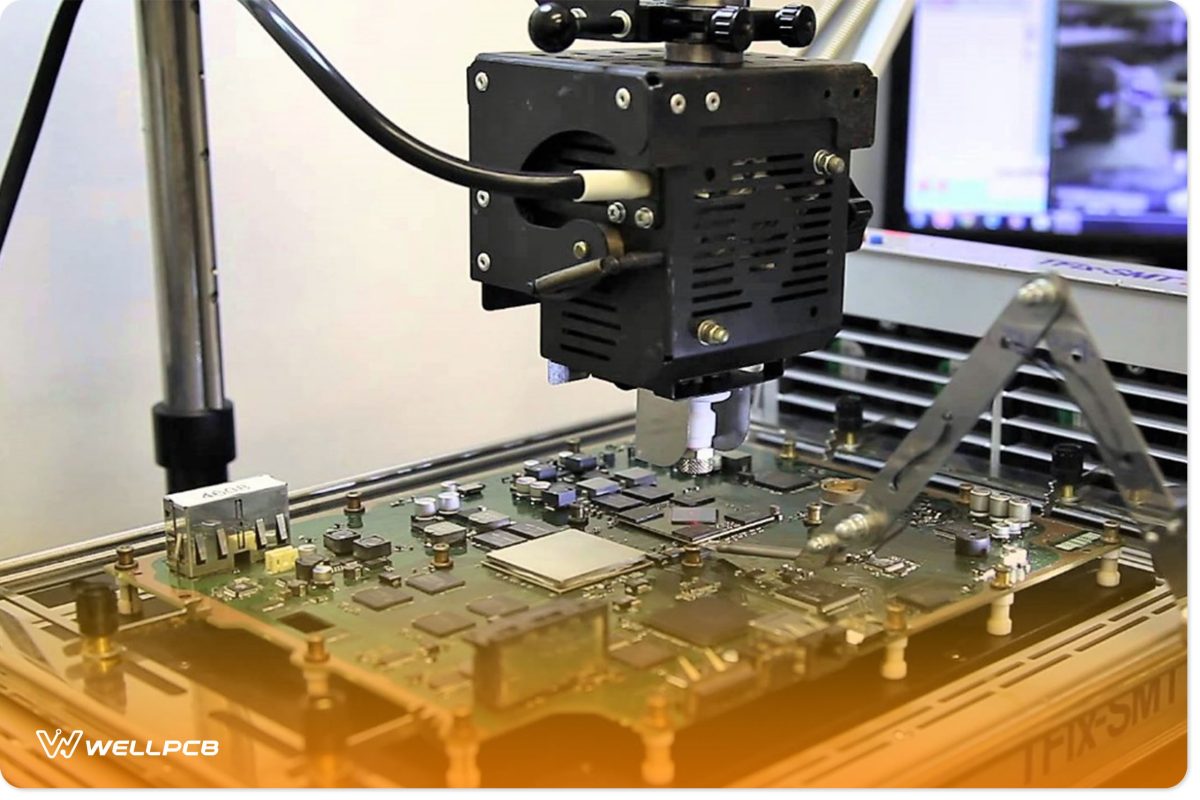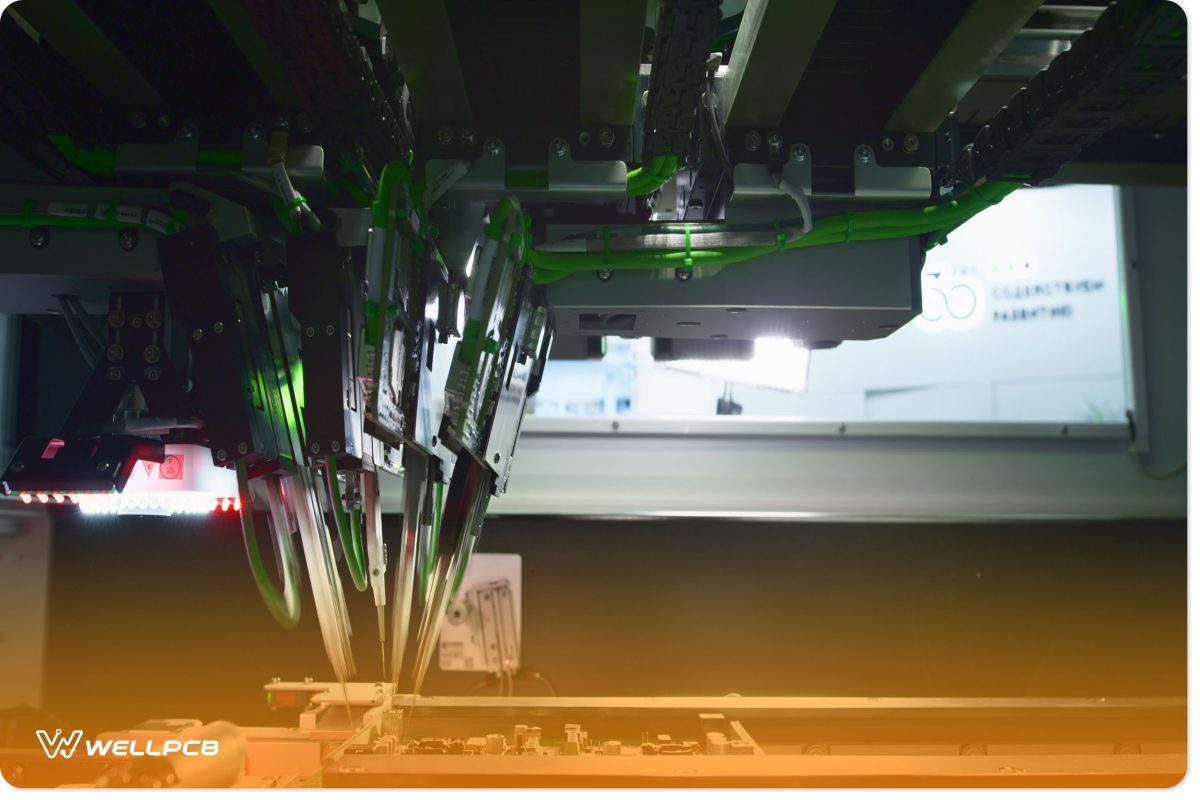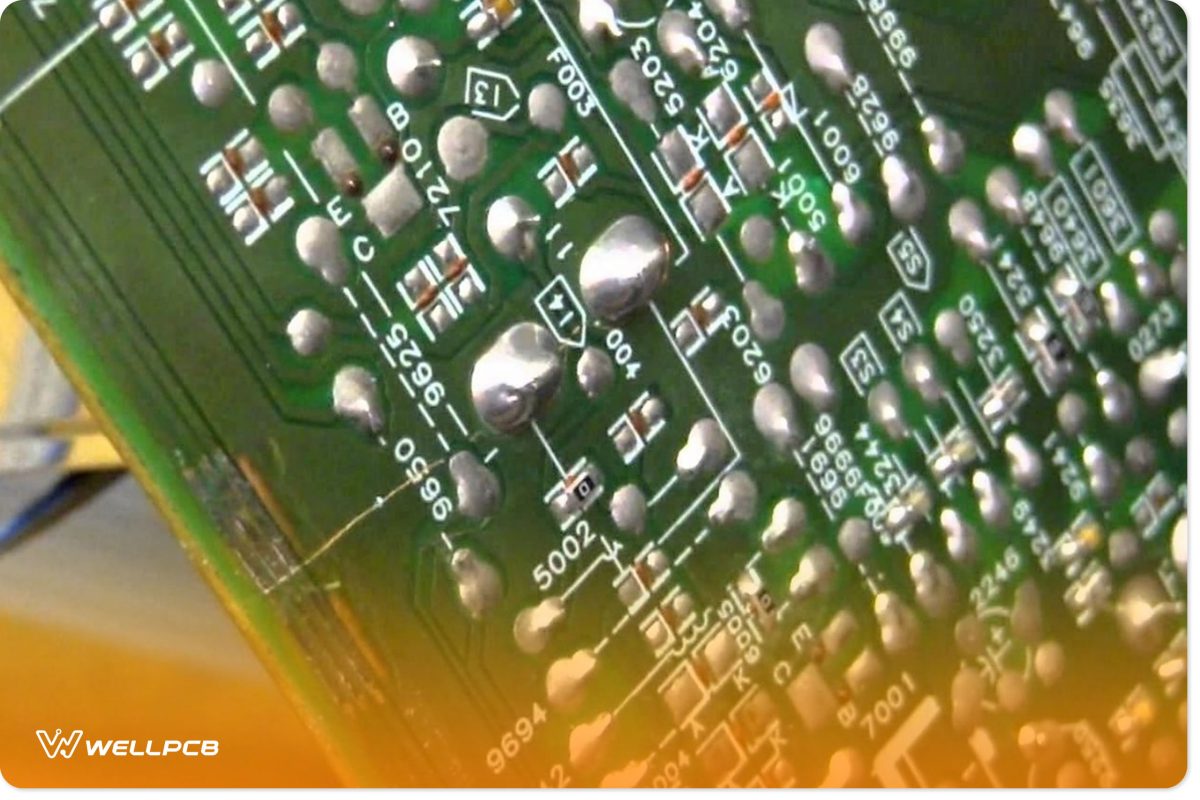Factory PCB Mounting
During the production stage, the PCB mounting varies every step. Due to the requirement for high-resolution imaging of the circuitry, the PCB must be mounted firmly to the CNC machine for board calibration and error-free imaging. CNC machines usually use computer controller pneumatic or servo grips to hold the board in place. The computer-based on-the-board properties control the amount of pressure applied during the PCB mounting. Automates assembly lines use multi-axis robotic PCBs mounting to move the board around the factory and position it beneath the milling machinery.

Rework and Assembly Mounting
A technician on hand mainly does rework. So, the most use generic wise clamp PCB mounting method. These are simple clamps that can be adjusted to fit almost any PCB. For SMD, the reworked PCB mounting system includes a heating bed and hot air station. The heating bed helps in preheating the huge ground plane in the multilayer boards. Pre-heating makes the soldering and de-soldering process very easy. Most of these PCB mounting beds have a built-in magnification tool to help the technician visualize tiny components and solder joints. Some of them have simple 6x to 20x lenses mounted on a flexible hand. Professional rework beds have some microscopes for magnifying the SMD parts.

Effects of Improper Mounting
Improper PCB mounting may result in considerable damage to the PCBs. For example, during the production and assembly in the factory, the misaligned PCB is very likely to be rejected at the testing stage. A shift of about 0.1mm for high-resolution traces will fail the PCB at the testing stage. PCBs must be mounted with excellent support in the enclosures to prevent them from damage during usage. Improper mounting with an imbalance of weight may cause the board to fail shorty, especially with multiple layers. Slide PCB mounting must have even support to prevent board damage and keep the components safe from vibration and force impacts.






